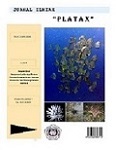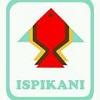Utilization Of Geographic Information System (Gis) For Selection Of Idle Pond For Vannamei Shrimp Cultivation
DOI:
https://doi.org/10.35800/jip.v10i1.35727Keywords:
Litopenaeus vannamei, Water quality, Land Suitability, Geographical Information SystemsAbstract
Land suitability is one aspect that determines the success of vannamei shrimp cultivation in coastal pond areas. Cultivation of vannamei shrimp in ponds has a spatial component as well as differences in the biophysical and socio-economic characteristics of each location. Many ponds that are intensively managed have not taken advantage of the advantages of Geographical Information Systems (GIS) in selecting locations and managing vannamei shrimp culture, which is important to do to avoid business failure. This study used a survey method to collect data on water quality parameters (acidity / pH, temperature, salinity, dissolved oxygen / DO, nitrate, and phosphate). Analysis of land suitability for vannamei shrimp cultivation in ponds using the scoring method, each water quality parameter is weighted and a score is then divided into 4 land suitability classes, namely classes S1 (Very Suitable), S2 (Sufficiently Suitable), S3 (Conditional Appropriate), and N (Unsuitable). The results showed that the vannamei shrimp pond land suitability map produced a thematic map of the suitability of the vannamei shrimp pond land which had a total area of 13.65 ha of vannamei shrimp and had 4 levels of suitability, namely very suitable class (S1) with an area of 3.96 ha, a class that appropriate (S2) has an area of 7.8 ha, a moderately suitable class (S3) has an area of 0.85 ha, and an unsuitable class (N) has an area of 1.04 ha.
Keywords: Litopenaeus vannamei; Water quality; Land Suitability; Geographical Information Systems
Abstrak
Kesesuaian lahan merupakan salah satu aspek yang menentukan keberhasilan kegiatan budidaya udang vannamei di wilayah tambak pesisir. Budidaya udang vannamei di tambak memiliki komponen keruangan serta perbedaan karakteristik biofisik dan social ekonomi dari setiap lokasi. Banyak tambak yang dikelola secara intensif belum memanfaatkan kelebihan Sistem Informasi Geografis (SIG) dalam melakukan pemilihan lokasi dan pengelolaan budidaya udang vannamei, dimana hal tersebut penting dilakukan untuk menghindari kegagalan usaha. Penelitian ini menggunakan metode survei untuk pengambilan data parameter kualitas air (keasaman/pH, suhu, salinitas, oksigen terlarut/DO, nitrat, dan fosfat). Analisis kesesuaian lahan budidaya udang vannamei di tambak menggunakan metode skoring, parameter kualitas air masing-masing diberi bobot dan skor yang kemudian dibedakan menjadi 4 kelas kesesuaian lahan yaitu kelas S1 (Sangat Sesuai), S2 (Cukup Sesuai), S3 (Sesuai Bersyarat), dan N (Tidak Sesuai). Hasil penelitian didapatkan peta kesesuaian lahan tambak udang vannamei menghasilkan peta tematik kesesuaian lahan tambak udang vannamei memiliki total luas tambak udang vannamei seluas 13,65 Ha serta memiliki 4 tingkat kesesuaian yaitu kelas sangat sesuai (S1) dengan luasan sebesar 3,96 Ha, kelas yang sesuai (S2) memiliki luasan sebesar 7,8 Ha, kelas yang cukup sesuai (S3) memiliki luasan sebesar 0,85 Ha, dan kelas yang tidak sesuai (N) memiliki luasan sebesar 1,04 Ha.
Kata Kunci: Litopenaeus vannamei, Kualitas Perairan; Analisa Kesesuaian; Sistem Informasi Geografis
References
Abdelrahman, H.A., A. Abebe, and C.E. Boyd. 2018. Influence of variation in water temperature on survival, growth, and yield of Pacific white shrimp Litopenaeus vannamei in inland ponds for lowâ€salinity culture. Aquaculture Research. DOI: 10.1111/are.13943.
Aishi, K., S. Sinnasamy, T.H. MacRae, T.S.T. Muhammad, A. Lv, J. Sun, S. Chen, H. Shi, T.M. Pau, M.D. Abdullah, and Y.Y. Sung. 2019. Hsp70 knockdown reduced the tolerance of Litopenaeus vannamei post larvae to low pH and salinity. Aquaculture 512: 734346. DOI : 10.1016/j.aquaculture.2019.734346
Ambasankar, K. and Ali, S.A. 2002. Effect of dietary phosphorus on growth and phosphorus excretion in Indian white shrimp. J. Aquac. Trop. 17, 119– 126.
Arts, J.A.J., A.J. Taverne-Thiele, H.F.J. Savelkoul, and Jan H.W.M. Rombout. 2007. Haemocyte reactions in WSSV immersion infected Penaeus monodon. Fish & Shellfish Immunology 23: 164-170. Doi:10.1016/j.fsi.2006.10.003
Boyd, C.E. and Pine, H. 2010. Application of agrometeorology to aquaculture and fisheries. In: Guide to Agricultural Meteorological Practices (GAMP), Chapter 13. (PP. 1–25). Geneva, Switzerland: World Meteorological Organization.
Boyd, C. E., C. W. Wood, and T. Thunjai. 2002. Aquaculture pond bottom soil quality management. Pond Dynamics /Aquaculture Collaborative Research Support Program, Oregon State University, Corvallis, Oregon.
Briggs, M., Funge-Smith, S., Subasinghe, R. and Phillips, M., 2004. Introductions and movement of Penaeus vannamei and Penaeus stylirostris into Asia and the Pacific. Food and Agriculture Organization of the United Nations, Regional Office for Asia and the Pacific, Bangkok. RAP Publ. 2004/10, 92 pp.
Chakrabarty, u., A. Mallik, D. Mondal, S. Dutta, N. Mandal. 2014. Assessment of WSSV prevalence and distribution of disease-resistant shrimp among the wild population of Penaeus monodon along the west coast of India. Journal of Invertebrate Pathology 119: 12–18. Doi : 10.1016/j.jip.2014.03.005.
Chakrabarty, U., S. Dutta, A. Mallik And N. Mandal. 2014. White Spot Syndrome Virus (WSSV) And Prevalence Of Disease Resistance In A Commercially Cultured Population Of Penaeus monodon Fabricius, 1798 (Decapoda, Dendrobranchiata). Crustaceana 87 (14) 1593-1605
Furtado, P.S., M.A.J. Valenzuela, M.A. Badillo, G. Gaxiola and W. Wasielesky Jr. 2016. Effect of dissolved carbon dioxide on oxygen consumption in the Pacific white shrimp, Litopenaeus vannamei (Boone 1931). Marine and Freshwater Behaviour and Physiology, DOI: 10.1080/10236244.2016.1213568
Frias-Espericueta, M.G., M. Harfush-Melendez, and F. Páez-Osuna. 2000. Effects of Ammonia on Mortality and Feeding of Postlarvae Shrimp Litopenaeus vannamei. Bull. Environ. Contam. Toxicol. 65: 98-103. DOI: 10.1007/s001280000100
Huang, K., Wu, W., Kong, L.F., and Huang, H.H., 2004. Requirements of Penaeus vannamei in low salinity water for dietary phosphorus and calcium. J. Ocean Univ. China 34 (2), 209– 216.
Jayanthi, M., S. Thirumurthy, M. Muralidhar, and P. Ravichandran. 2018. Impact of shrimp aquaculture development on important ecosystems in India. Global Environmental Change 52 : 10–21.Doi : 10.1016/j.gloenvcha.2018.05.005
Jiang, L., L. Pan, and Fang-Bo. 2005. Effect of dissolved oxygen on immune parameters of the white shrimp Litopenaeus vannamei. Fish & Shellfish Immunology 18: 185 – 188. Doi : 10.1016/j.fsi.2004.07.001.
Krummenauer, D., L.H. Poersch, G. Fóes, G. Lara, W. Wasielesky Jr. 2016. Survival and growth of Litopenaeus vannamei reared in Bft System under different water depths. Aquaculture 465: 94–99. Doi : 10.1016/j.aquaculture.2016.09.002
Lago-Lestón, A., E. Ponce and Ma. E. Muñoz. 2007. Cloning and expression of hyperglycemic (CHH) and molt-inhibiting (MIH) hormones mRNAs from the eyestalk of shrimps of Litopenaeus vannamei grown in different temperatures and salinity conditions. Aquaculture 270: 343–357. Doi : 10.1016/j.aquaculture.2007.04.014
Liao C.I. and Y.H. Chien. 2011. The pacific white shrimp Litopenaeus vannamei in Asia: the world's most widely cultured alien crustacean. In: Galil BS, Clark PF, Carlton JT, editors. In the Wrong Place - Alien Marine Crustaceans: Distribution, Biology and Impacts. 1 ed. Dordrecht, Heidelberg, London, New York: Springer. p. 489–520.
Magallon-Barajas, F.J., R.S. Villegas, G.P. Clark and B.L. Moreno. 2006. Litopenaeus vannamei (Boone) post-larval survival related to age, temperature, pH, and ammonium Concentration. Aquaculture Research, 2006, 37, 492 – 499. doi:10.1111/j.1365-2109.2006.01455.x
Nagamani, K., dan Y. Suresh. 2019. Evaluation of coastal aquaculture ponds using remote sensing and GIS. Indian Journal of Geo-Marine Sciences Vol. 48 (08), pp. 1205-1209.
Pan, L., B. Fang, L. Jiang, and J. Liu. 2007. The Effect of Temperature on Selected Immune Parameters of the White Shrimp, Litopenaeus vannamei. Journal Of The World Aquaculture Society Vol. 38, No. 2 : 326-332.
Pan, L., L. Zhang, and H. Liu. 2007. Effects of salinity and pH on ion-transport enzyme activities, survival, and growth of Litopenaeus vannamei postlarvae. Aquaculture 273: 711–720. Doi : 10.1016/j.aquaculture.2007.07.218.
Perez-Velazquez, M., D.. Davis, L.A. Roy, and M.L. González-Félix. 2012. Effects of water temperature and Na+:K+ ratio on physiological and production parameters of Litopenaeus vannamei reared in low salinity water. Aquaculture 342–343: 13–17. Doi : 10.1016/j.aquaculture.2012.02.008.
Radiarta, I.N., A. Sudradjat dan E. Kusnendar. 2010. Analisis Spasial Potensi Kawasan Budidaya Laut Di Provinsi Maluku Utara Dengan Aplikasi Data Penginderaan Jauh Dan Sistem Informasi Geografis. J. Ris. Akuakultur Vol. 5 No.1 : 143-153.
Schuler, D.J., G.D. Boardman, D.D. Kuhn and G.J. Flick. 2010. Acute Toxicity of Ammonia and Nitrite to Pacific White Shrimp, Litopenaeus vannamei, at Low Salinities. Journal Of The World Aquaculture Society Vol. 41, No. 3: 438-446.
Valencia-Castaneda, G., M.G. Frias-Espericueta, RC. Vanegas-Perez, M.C. Chavez-Sanchez, F. Paez-Osuna. 2019. Toxicity of ammonia, nitrite, and nitrate to Litopenaeus vannamei juveniles in low-salinity water in single and ternary exposure experiments and their environmental implications. Environmental Toxicology and Pharmacology 70: 103193. Doi : 10.1016/j.etap.2019.05.002.
Venkateswarlu, V., P.V. Seshaiah, P. Arun and P.C. Behra. 2019. A study on water quality parameters in shrimp L. vannamei semi-intensive grow-out culture farms in coastal districts of Andhra Pradesh, India. International Journal of Fisheries and Aquatic Studies 7(4): 394-399.
Walker, S.J., W.H. Neill, A.L. Lawrence, and D.M. Gatlin-III. 2011. Effects of temperature and starvation on ecophysiological performance of the Pacific white shrimp (Litopenaeus vannamei). Aquaculture 319: 439–445. Doi : 10.1016/j.aquaculture.2011.07.015
Wang, X., E. Li, C. Xu, J.G. Qin, S. Wang, X. Chen, Y. Cai, K. Chen, L. Gan, N. Yu, Z. Du and L. Chen. 2014. Growth, body composition, ammonia tolerance and hepatopancreas histology of white shrimp Litopenaeus vannamei fed diets containing different carbohydrate sources at low salinity. Aquaculture Research: 1–12. doi:10.1111/are.12650
Yan, B., X. Wang, and M. Cao. 2007. Effects Of Salinity And Temperature On Survival, Growth, And Energy Budget Of Juvenile Litopenaeus vannamei. Journal of Shellfish Research, 26(1):141-146. DOI: 10.2983/0730-8000(2007)26[141:EOSATO]2.0.CO;2
Yan, D., Z. Xiumei, L. Xuxu, and D.N. Thakur. 2013. Effect of Dissolved Oxygen on Swimming Ability and Physiological Response to Swimming Fatigue of Whiteleg Shrimp (Litopenaeus vannamei). J. Ocean Univ. China (Oceanic and Coastal Sea Research) 13 (1): 132-140. DOI 10.1007/s11802-014-1974-1
Yuvanatemiya, V., C.E. Boyd, and P. Thavipoke. 2011. Pond Bottom Management at Commercial Shrimp Farms in Chantaburi Province, Thailand. Journal Of The World Aquaculture Society Vol. 42, No. 5.
Zhang, P., X. Zhang, J. Li, and G. Huang. 2006. The effects of body weight, temperature, salinity, pH, light intensity and feeding condition on lethal DO levels of white leg shrimp, Litopenaeus vannamei (Boone, 1931). Aquaculture 256: 579–587. doi:10.1016/j.aquaculture.2006.02.020
Zhou, J., Fang, W., Yang, X., Zhou, S., Hu, L., Li, X., Qi, X., Su, H., Xie, L., 2012. A non-luminescent and highly virulent Vibrio harveyi strain is associated with “bacterial white tail disease†of Litopenaeus vannamei shrimp. PLoS One 7 (2), 29961. Doi : 10.1371/journal.pone.0029961.
Downloads
Published
How to Cite
Issue
Section
License
COPYRIGHT
Authors who publish with this journal agree to the following terms:
Authors hold their copyright and grant this journal the privilege of first publication, with the work simultaneously licensed under a Creative Commons Attribution License that permits others to impart the work with an acknowledgment of the work's origin and initial publication by this journal.
Authors can enter into separate or additional contractual arrangements for the non-exclusive distribution of the journal's published version of the work (for example, post it to an institutional repository or publish it in a book), with an acknowledgment of its underlying publication in this journal.
Authors are permitted and encouraged to post their work online (for example, in institutional repositories or on their website) as it can lead to productive exchanges, as well as earlier and greater citation of the published work (See The Effect of Open Access).


















